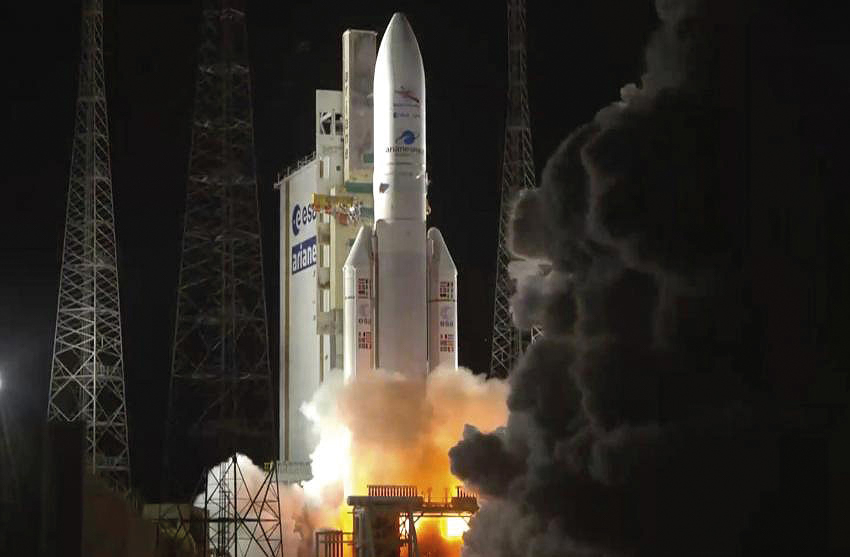
[dropcap]A[/dropcap] European – Japanese spacecraft was launched in the early hours of Saturday, October 20th embark on a seven year journey to examine Mercury.
The spacecraft designed and built by the ESA European Space Agency and The Japan Aerospace Exploration Agency (JAXA) launched the BepiColombo mission from Europe’s spaceport in French Guiana at about 1.45am Irish time on Saturday.
They plan to examine the iron content, internal composition and magnetosphere of the solar system’s smallest and least explored planet.
“The density of Mercury is much higher than the Earth, so trying to understand its origins is important if we want to understand the formation of the other planets and moons.
Answering these questions with telescopes on Earth is very difficult, but a spacecraft orbiting around Mercury can,” said Dr Ernst de Mooij, from the school of Physical Sciences in DCU.
This mission is only the third ever visit to Mercury because of the planets close proximity to the sun. Mercury is less than 60 million km away compared to Earth being near 150 million kilometres away.
Surface temperatures on the planet can reach 400 degrees during the day, and drop to minus 170 degrees at night. This is what makes the trip challenging.
BepiColombo, named after the 20th century Italian Mathematician and Engineer Giuseppe (Bepi) Colombo, will slingshot off the Earth’s gravitational field 1½ years after this launch.
It will then pick up speed on its journey, will fly past Venus twice and then fly by Mercury six times before finally slipping into its orbit around December 2025.
Once it has entered into Mercury’s orbit it will release two separate spacecraft it is carrying.
ESA’s Mercury Planetary Orbiter (MPO) and JAXA’s Mercury Magnetospheric Orbiter (MMO).
MPO will then study Mercury’s surface and internal composition, to determine the planet’s iron content and examine why its core is partially liquid. JAXA’s Mercury Magnetospheric Orbiter (MMO) will collect data on the planet’s
magnetosphere.
Dr Mooij added how, “building, launching and operating a spacecraft is expensive and to answer all the questions related to Mercury requires engineers and scientists with a wide
range of combined resources and knowledge”.
Both orbiters will study the planet for one year, with scope for possible one-year extension.
Alison Clair
Image Credit: Japan Today



